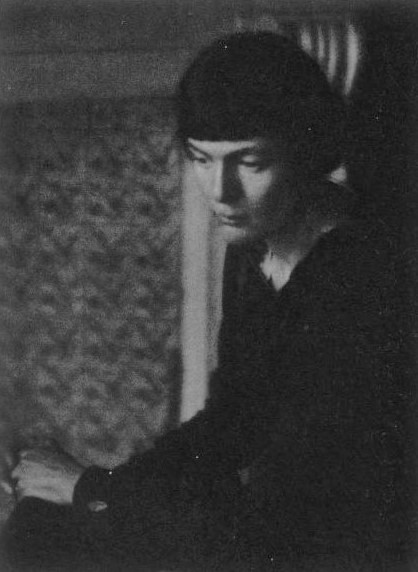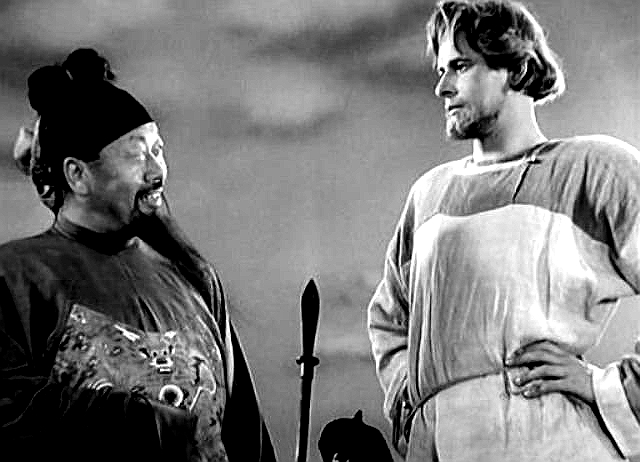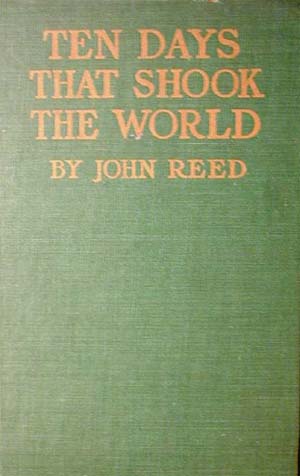|
Soviet Montage Theory
Soviet montage theory is an approach to understanding and creating cinema that relies heavily upon editing (''montage'' is French for "assembly" or "editing"). It is the principal contribution of Soviet film theorists to global cinema, and brought formalism to bear on filmmaking. Although Soviet filmmakers in the 1920s disagreed about how exactly to view montage, Sergei Eisenstein marked a note of accord in "A Dialectic Approach to Film Form" when he noted that montage is "the nerve of cinema", and that "to determine the nature of montage is to solve the specific problem of cinema". Its influence is far reaching commercially, academically, and politically. Alfred Hitchcock cites editing (and montage indirectly) as the lynchpin of worthwhile filmmaking. In fact, montage is demonstrated in the majority of narrative fiction films available today. Post-Soviet film theories relied extensively on montage's redirection of film analysis toward language, a literal grammar of film. A sem ... [...More Info...] [...Related Items...] OR: [Wikipedia] [Google] [Baidu] |
Sergei Eisenstein
Sergei Mikhailovich Eisenstein (russian: Сергей Михайлович Эйзенштейн, p=sʲɪrˈɡʲej mʲɪˈxajləvʲɪtɕ ɪjzʲɪnˈʂtʲejn, 2=Sergey Mikhaylovich Eyzenshteyn; 11 February 1948) was a Soviet film director, screenwriter, film editor and film theorist. He was a pioneer in the theory and practice of montage. He is noted in particular for his silent films ''Strike'' (1925), ''Battleship Potemkin'' (1925) and ''October'' (1928), as well as the historical epics ''Alexander Nevsky'' (1938) and ''Ivan the Terrible'' (1944, 1958). In its 2012 decennial poll, the magazine ''Sight & Sound'' named his ''Battleship Potemkin'' the 11th greatest film of all time. Early life Sergei Eisenstein was born on 22 January 1898 in Riga, Latvia (then part of the Russian Empire in the Governorate of Livonia), to a middle-class family. His family moved frequently in his early years, as Eisenstein continued to do throughout his life. His father, the architect Mikhail Osipov ... [...More Info...] [...Related Items...] OR: [Wikipedia] [Google] [Baidu] |
Man With A Movie Camera
''Man with a Movie Camera'' (russian: Человек с киноаппаратом, translit=Chelovek s kinoapparatom) is an experimental 1929 Soviet silent documentary film, directed by Dziga Vertov, filmed by his brother Mikhail Kaufman, and edited by Vertov's wife Yelizaveta Svilova. Kaufman also appears as the eponymous Man of the film. Vertov's feature film, produced by the film studio All-Ukrainian Photo Cinema Administration (VUFKU), presents urban life in Moscow, Kyiv and Odesa during the late-1920s.facsimile It has no actors. From dawn to dusk Soviet citizens are shown at work and at play, and interacting with the machinery of modern life. To the extent that it can be said to have "characters", they are the cameramen of the title, the film editor, and the modern Soviet Union they discover and present in the film. ''Man with a Movie Camera'' is famous for the range of cinematic techniques Vertov invented, employed or developed, such as multiple exposure, fast motion, s ... [...More Info...] [...Related Items...] OR: [Wikipedia] [Google] [Baidu] |
Pound's Ideogrammic Method
The ideogrammic method was a technique expounded by Ezra Pound which allowed poetry to deal with abstract content through concrete images. The idea was based on Pound's reading of the work of Ernest Fenollosa, especially ''The Chinese Written Character as a Medium for Poetry'', composed by Fenollosa but edited by Pound after the author's death, 1908. Pound gives a brief account of it in his book '' The ABC of Reading'' (1934). He explains his understanding of the way Chinese characters were formed, with the example of the character 'East' (東) being essentially a superposition of the characters for 'tree' (木) and 'sun' (日); that is, a picture of the sun tangled in a tree's branches, suggesting a sunrise (which occurs in the East). He then suggests how, with such a system where concepts are built up from concrete instances, the (abstract) concept of 'red' might be presented by putting together the (concrete) pictures of: This was a key idea in the development of Imagism. ... [...More Info...] [...Related Items...] OR: [Wikipedia] [Google] [Baidu] |
Imagism
Imagism was a movement in early-20th-century Anglo-American poetry that favored precision of imagery and clear, sharp language. It is considered to be the first organized modernist literary movement in the English language. Imagism is sometimes viewed as "a succession of creative moments" rather than a continuous or sustained period of development. The French academic René Taupin remarked that "it is more accurate to consider Imagism not as a doctrine, nor even as a poetic school, but as the association of a few poets who were for a certain time in agreement on a small number of important principles".Taupin, René (1929). ''L'Influence du symbolism francais sur la poesie Americaine (de 1910 a 1920)''. Paris: Champion. Translation (1985) by William Pratt and Anne Rich. New York: AMS. The Imagists rejected the sentiment and discursiveness typical of Romantic and Victorian poetry. In contrast to the contemporary Georgian poets, who were generally content to work within that tra ... [...More Info...] [...Related Items...] OR: [Wikipedia] [Google] [Baidu] |
Continuity Editing
Continuity editing is the process, in film and video creation, of combining more-or-less related shots, or different components cut from a single shot, into a sequence to direct the viewer's attention to a pre-existing consistency of story across both time and physical location. Often used in feature films, continuity editing, or "cutting to continuity", can be contrasted with approaches such as montage, with which the editor aims to generate, in the mind of the viewer, new associations among the various shots that can then be of entirely different subjects, or at least of subjects less closely related than would be required for the continuity approach. When discussed in reference to classical Hollywood cinema, it may also be referred to as classical continuity. Common techniques of continuity editing Continuity editing can be divided into two categories: temporal continuity and spatial continuity. Within each category, specific techniques will work against a sense of continuity. ... [...More Info...] [...Related Items...] OR: [Wikipedia] [Google] [Baidu] |
Alexander Nevsky (film)
''Alexander Nevsky'' (russian: Алекса́ндр Не́вский) is a 1938 Soviet historical drama film directed by Sergei Eisenstein. It depicts the attempted invasion of Novgorod in the 13th century by the Teutonic Knights of the Holy Roman Empire and their defeat by Prince Alexander, known popularly as Alexander Nevsky (1220–1263). Eisenstein made the film in association with Dmitri Vasilyev and with a script co-written with Pyotr Pavlenko; they were assigned to ensure that Eisenstein did not stray into "formalism" and to facilitate shooting on a reasonable timetable. It was produced by Goskino via the Mosfilm production unit, with Nikolai Cherkasov in the title role and a musical score by Sergei Prokofiev. ''Alexander Nevsky'' was the first and most popular of Eisenstein's three sound films. Eisenstein, Pavlenko, Cherkasov and Abrikosov were awarded the Stalin Prize in 1941 for the film. In 1978, the film was included in the world's 100 best motion pictures acco ... [...More Info...] [...Related Items...] OR: [Wikipedia] [Google] [Baidu] |
Apocalypse Now
''Apocalypse Now'' is a 1979 American epic war film produced and directed by Francis Ford Coppola. The screenplay, co-written by Coppola, John Milius and Michael Herr, is loosely based on the 1899 novella ''Heart of Darkness'' by Joseph Conrad, with the setting changed from late 19th-century Congo to the Vietnam War. The film follows a river journey from South Vietnam into Cambodia undertaken by Captain Willard (Martin Sheen), who is on a secret mission to assassinate Colonel Kurtz (Marlon Brando), a renegade Special Forces officer who is accused of murder and presumed insane. The ensemble cast also features Robert Duvall, Frederic Forrest, Albert Hall, Sam Bottoms, Laurence Fishburne and Dennis Hopper. Milius became interested in adapting ''Heart of Darkness'' for a Vietnam War setting in the late 1960s, and initially began developing the film with Coppola as producer and George Lucas as director. After Lucas became unavailable, Coppola took over directorial control, and w ... [...More Info...] [...Related Items...] OR: [Wikipedia] [Google] [Baidu] |
Strike (1925 Film)
''Strike'' (russian: Стачка, Stachka) is a 1925 Soviet silent drama film directed and edited by Sergei Eisenstein. Originating as one entry out of a proposed seven-part series titled "Towards Dictatorship of the Proletariat", ''Strike'' was a joint collaboration between the Proletcult Theatre and the film studio Goskino. As Eisenstein's first full-length feature film, it marked his transition from theatre to cinema, and his next film ''Battleship Potemkin'' emerged from the same film cycle. Arranged in six parts, the film depicts a strike in 1903 by the workers of a factory in pre-revolutionary Russia, and their subsequent suppression. It is best known for a sequence towards the climax, in which the violent suppression of the strike is cross-cut with footage of cattle being slaughtered, and similar animal metaphors are used throughout the film to describe of various individuals. Upon release, ''Strike'' received praise from critics, but many audiences were confused by its ... [...More Info...] [...Related Items...] OR: [Wikipedia] [Google] [Baidu] |
Antagonist
An antagonist is a character in a story who is presented as the chief foe of the protagonist. Etymology The English word antagonist comes from the Greek ἀνταγωνιστής – ''antagonistēs'', "opponent, competitor, villain, enemy, rival," which is derived from ''anti-'' ("against") and ''agonizesthai'' ("to contend for a prize"). Types Heroes and villains The antagonist is commonly positioned against the protagonist and their world order. While most narratives will often portray the protagonist as a hero and the antagonist as a villain, like Harry Potter and Lord Voldemort in '' Harry Potter'', the antagonist does not always appear as the villain. In some narratives, like Light Yagami and L in '' Death Note'', the protagonist is a villain and the antagonist is an opposing hero. Antagonists are conventionally presented as making moral choices less savory than those of protagonists. This condition is often used by an author to create conflict within a story. This is ... [...More Info...] [...Related Items...] OR: [Wikipedia] [Google] [Baidu] |
Protagonist
A protagonist () is the main character of a story. The protagonist makes key decisions that affect the plot, primarily influencing the story and propelling it forward, and is often the character who faces the most significant obstacles. If a story contains a subplot, or is a narrative made up of several stories, then each subplot may have its own protagonist. The protagonist is the character whose fate is most closely followed by the reader or audience, and who is opposed by the antagonist. The antagonist provides obstacles and complications and creates conflicts that test the protagonist, revealing the strengths and weaknesses of the protagonist's character, and having the protagonist develop as a result. Etymology The term ''protagonist'' comes , combined of (, 'first') and (, 'actor, competitor'), which stems from (, 'contest') via (, 'I contend for a prize'). Ancient Greece The earliest known examples of a protagonist are found in Ancient Greece. At first, dramatic pe ... [...More Info...] [...Related Items...] OR: [Wikipedia] [Google] [Baidu] |
The Good, The Bad And The Ugly
''The Good, the Bad and the Ugly'' ( it, Il buono, il brutto, il cattivo, literally "The good, the ugly, the bad") is a 1966 Italian epic spaghetti Western film directed by Sergio Leone and starring Clint Eastwood as "the Good", Lee Van Cleef as "the Bad", and Eli Wallach as "the Ugly". Its screenplay was written by Age & Scarpelli, Luciano Vincenzoni, and Leone (with additional screenplay material and dialogue provided by an uncredited Sergio Donati),Sir Christopher Frayling, The Good, the Bad and the Ugly audio commentary (Blu-ray version). Retrieved on 26 April 2014. based on a story by Vincenzoni and Leone. Director of photography Tonino Delli Colli was responsible for the film's sweeping widescreen cinematography, and Ennio Morricone composed the film's score, including its main theme. It was an Italian-led production with co-producers in Spain, West Germany, and the United States. Most of the filming took place in Spain. The film is known for Leone's use of long shots ... [...More Info...] [...Related Items...] OR: [Wikipedia] [Google] [Baidu] |
Ten Days That Shook The World
''Ten Days That Shook the World'' (1919) is a book by the American journalist and socialist John Reed. Here, Reed presented a firsthand account of the 1917 Russian October Revolution. Reed followed many of the most prominent Bolsheviks closely during his time in Russia. Background John Reed was on an assignment for ''The Masses'', a magazine of socialist politics, when he was reporting on the Russian Revolution. Although Reed stated that he had "tried to see events with the eye of a conscientious reporter, interested in setting down the truth" during the time of the event, he stated in the preface that "in the struggle my sympathies were not neutral" (since the book primarily shares the perspective of the Russian working class). Before John Reed left for Russia, the Espionage Act was passed on June 15, 1917. This provided for fines and imprisonment as a punishment for interference with the recruiting of soldiers and prohibited the mailing of any newspaper or magazine that prom ... [...More Info...] [...Related Items...] OR: [Wikipedia] [Google] [Baidu] |








